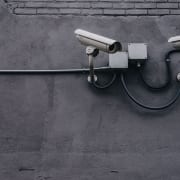A Guide to Use a Scaffold Safely
 You can find scaffold everywhere, even around an under-construction small building or substantial triple-story buildings. The scaffold can ideally be used in a great variety of inspection, construction, repair, and maintenance projects. As per the recent survey of OSHA, around 65% of the workers in the construction industry work on a scaffolding recurrently and one of the most reliable is Bayside scaffolding.
You can find scaffold everywhere, even around an under-construction small building or substantial triple-story buildings. The scaffold can ideally be used in a great variety of inspection, construction, repair, and maintenance projects. As per the recent survey of OSHA, around 65% of the workers in the construction industry work on a scaffolding recurrently and one of the most reliable is Bayside scaffolding.
But before we proceed further, let us explain what is the concept of scaffolding safety.
What is the concept of Scaffolding Safety?
Three things should be kept in mind about scaffolding safety, i.e. it must be built according to the proper well-competent person. Moreover, workers must be appropriately trained before they start working and using the scaffold, and all the components of the scaffold must be viewed properly by an expert. One of the most important things that require proper consideration is that the safety check must be ensured properly and tag well before the shifts start working on it. It will help in guaranteeing the integrity and safety of the scaffold, and thus forth, the fear of unpleasant happening reduces this way.
Unfortunately, around 60 percent of the construction industries have experienced injuries as well as deaths due to the absence of knowledge with the use of the scaffold. That is why your require proper care and a complete guide to use it without any fear of injury.
This article is also a practical attempt to let different industries know the importance of using the scaffold efficiently. This is why you are strongly recommended to pay complete attention and grab the most crucial detail. It will help you in avoiding unforeseen happening in your next construction project.
But before we proceed further, we would like to explain some of the significant Dos and Don’ts of a scaffold that must be kept in mind.
Some Major Dos and Don’ts of Scaffolding
We are presenting you with the basic and comprehensive guidelines to avoid scaffolding hazards.
Dos
- Properly inspect the scaffolding by using the mobile inspection app. You can do it by properly maintaining the checklist as well.
- Make sure your checklists have been appropriately checked before the shifts have started working on the scaffolding.
- Properly train the employees on how to tackle the possible hazards.
- Before you initiate the work, keep the toolbox with you and don’t ignore it at any cost.
- Make sure you have appropriately worn the PPE.
- If you don’t check the inspection bag habitually, then start checking them too.
- It would be best if you had the idea about what is the weight capacity of the scaffold.
You must have the support above the scaffold podium. - Make sure that you haven’t extended the adjusted leg screw more than 12 inches. If you have done this, then change it in the first place.
- Keep the lanyard and attach it with the person who is on the scaffold.
- Properly wear the belt if you are working on a higher altitude.
- To access the scaffold, properly use the ladder.
- Your feet must be on the decking else it can be dangerous for you.
- Must check that the planking is secure enough for the movement.
- Must take the instructor’s instruction seriously, because the direction of well-competent person makes the scaffolding less severe and dangerous for you.
- Your mind must be active, and you should have a decent idea about who else is working with you. The co-workers above and below must be focused equally as it can guarantee better and secure work.
- The debris chutes must be used with the help of your hands.
- Make sure that the scaffold’s wheels are working correctly, and for this purpose, you can utilize the wheel blocks as well.
- The wheel-lock should also be appropriately depressed before you start using the scaffold.
- Netting should be used to catch anything that falls.
Don’ts
The following are the different don’ts that must be in your mind while using the scaffold.
- Leave anything before the shift ends.
- Always refrain from overloading the scaffold structures.
- Also install some unbalanced objects including loose bricks, boxes, barrels, and the blocks to provide support to the scaffold, or to increase the height of the planks.
- Working on the scaffolds if they have not been planked fully.
- Working on the scaffolding without ensuring if the flooring and guardrails are not at their place has a hazardous potential.
- Stand on the extensions, tiles, or guardrails.
- If you are working on the already damaged scaffold or using the scaffold with the damaged parts or some of the significant components of a scaffold, including canopies, guardrails, planking, or toeboards, you are inviting disasters.
- Working on the scaffold without checking the checklist or without consulting the experienced or well-competent individual is a perfect recipe for disaster.
- Start walking on the scaffold that is covered with the mud, ice or snow.
- Don’t use the scaffold in the unpleasant weather, including snowfall, rain, wind, or hail.
- Using the strictly prohibited or dangerous portion of the scaffold for climbing it up.
- Don’t climb up the scaffold by holding any tool or material in your hand; they must be hoisted up disjointedly.
- Jump as of, to or among scaffolding.
- Exceed your limit or bend over the guardrails.
- Swing the scaffold.
- Hurl everything overboard if the spotter is not available.
- Shaking the scaffold if someone else is standing on the scaffold.
Guidelines before you start tagging the scaffold
The core purpose of the scaffold tag is to protect the life of the worker against any danger. It also helps in the identification of whether the scaffold is well-protected, can it be used or not.
The following are different guidelines that require consideration while tagging the scaffold.
- A well-experienced or a competent person must be hired to inspect the tagging of the scaffold properly. The individual should be well-experienced in the erection of the scaffold.
- While tagging the scaffold tracking process, the unique tags must be assigned to maintain a unique identity properly.
- Soon after erecting the scaffold, they must be adequately inspected as per the pre-requisite standards.
- You must identify the scaffold tagging by using different shades including red, blue, green or yellow color with the black labels.
- The front informational details must be completed for all the tags.
- Use can use a better color scheme as per the requirements.
- The templates must be created to ensure that all the core points have been appropriately mentioned on the scaffold, and the checklist must be checked multiple times.
- Make sure that you have provided enough training to the workers and they can efficiently manage the scaffolding and can act well in any unforeseen happening.
The Final Words
Every human life is precious and valuable. This is why it the responsibility of all the organizations to take the best care of their workers who put their lives at risk while working on the scaffolding structures. However, creating awareness is equally important, and it all can be done by adequately organizing the training programs.













I completely agree that you should properly inspect the scaffolding because that’ll be important for your safety. If the scaffolding isn’t up to standard, then you can save time and money by not getting it. Inspecting it first will make your investment much better.
Thanks for sharing the tips about the use of scaffolding. This will guide many people during the use of saff holding. Such a great word which you use in your article and the article is amazing knowledge. Thank you for sharing it. I very appreciate with your blog.